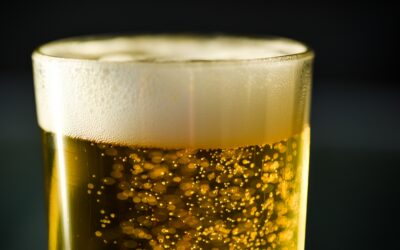In the back catalogue of central European brewing is a cluster of styles of stronger lager, known collectively as Bockbier. While nowhere near as well-known as their lighter cousins, they have amassed respect both for range and their quiet assertiveness.
Although attempts in recent years to create stronger lagers have focussed around craft variants of the stronger sorts of industrial lager, taking names like ‘Imperial Pils’, few have been consistently impressive, so much so that we have not yet included them here.
See also: Baltic Porter
Dunkel Bock
Dunkel (sometimes Dunkler or Dunkles) Bock is dark, rounded and heavily malt-driven, with its hops in close check. This stronger style of lager (6.3-7.2% ABV) began life centuries before the arrival of lagering, as a strong ale for the Autumn. As maltsters and brewers cleared space in their grain stores for the new harvest, they used up the previous year’s grain by making strong beer for Autumn and even stronger ones for Christmas, and in a few cases the following Easter. Originating from the north German trading town of Einbeck, its fame spread during the heyday of the Hanseatic League (14th to 16th centuries). After a lengthy period of decline, its revival dates to 17th century Munich, the brewers from which may well have initiated transition of Bockbier to being a lager that gradually gained ground against all other stronger German beers.
Bok
Similar beers appear, called Bok in Norway, and Herfstbok (or Bokbier) in the Netherlands. These are somewhat similar, tend to be darker and bitter-sweet and, in the case of the Dutch version, can be top-fermented.
 Brauerei Kneitinger in Regensburg, Germany is famous for its highly drinkable Bockbier (photo: André Brunnsberg)
Brauerei Kneitinger in Regensburg, Germany is famous for its highly drinkable Bockbier (photo: André Brunnsberg)
Heller Bock (or Maibock)
A firm, malt-driven stronger lager (6.3-7.5% ABV), typically somewhat hoppier than its darker autumnal equivalent. Seeing it either as a pale form of Dunkles Bock or a stronger form of Helles or Märzen is equally acceptable. Historically, Mai Bock was a seasonal beer that started to appear around April in northern Germany. Naming it Heller (sometimes Helles) Bock implies year-round production. The Netherlands has a similarly seasonal, somewhat lighter, sweeter beer, called meibok or lentebok.
Doppelbock
Perhaps the greatest of all the full-malt beer styles. A Doppelbock should be lush and warming, rather than roasted or burnt. Strong (7.2-9.5% ABV) and with low carbonation, it is can take on a wide range of colours, from deep golden to dark brown. The style may have first been made in a monastery in Munich, the beer being so high in grain that it earned the description “liquid bread”. Modern examples are more attenuated, and tend to come with brand names ending in “-ator”.
Eisbock
The name ‘Ice’ Bock comes from the technique of freezing some water out of a completed Doppelbock, to make this intense style. Most are brewed from malted barley but a few are wheat beers. The best examples are almost oily and memorably smooth, while the worst taste like ugly attempts to get a place in that brewery-sponsored book of world records.




